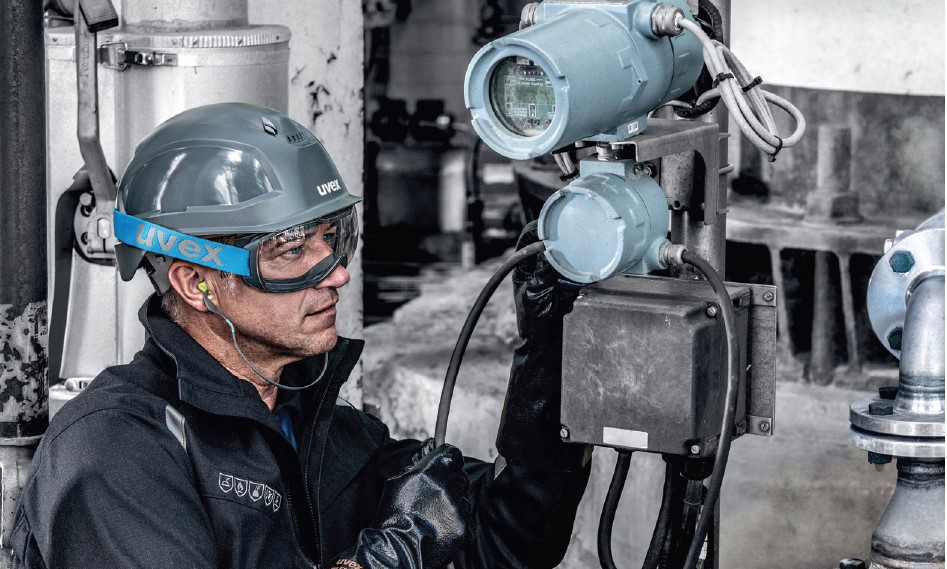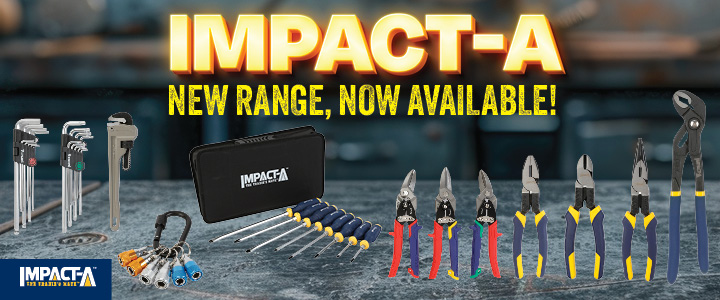Eyes are irreplaceable and vulnerable to a range of potential hazards, particularly in workplaces. Correct and compliant eye protection is essential to avoid lasting consequences. It pays to consider all possibilities when choosing eye protection. Sunglasses will protect road workers from UV radiation but are often useless against flying debris.
“Each job requires its own specific type of eye protection,” says Tamara Mika, trade marketing manager at Bollé Safety, a global PPE eyewear company.
“Our products are clearly marked depending on whether you’re protecting from shards or impact. For chemical or dust protection, you need goggles that make a tight seal with your face. It’s all about wearing the correct safety glasses for the appropriate situation.”
GETTING IT RIGHT
The correct eyewear could be spectacles, goggles or products that completely wrap around a user’s face.
There are different classifications for different products and it’s important to get it right.
“It all comes down to the application of the product for the situation in which it’s being used,” says James Dibou, eyewear product manager at Uvex, a company that makes a wide range of protective and safety PPE. “Whether you need it to be splash or dust proof, or if you are working in abrasive environments where there are sparks, debris or shrapnel, the correct level of protection is of vital importance. Where possible, I recommend talking to your environmental health and safety officer about your work environment and the products and solutions that you need.”
The ramifications of incorrect—or no—eye protection are huge. A simple scratch on the eye can heal but is painful for an extended period. A foreign body in the eye may be minor but it can also cause major damage. Chemicals in the eye can cause permanent scarring. Reduction in vision, blindness and even losing eye are all real possibilities.
“Eye protection is to be taken very seriously,” says Tamara Mika. “And it’s such a simple thing to wear. The level of risk versus the ease of using eye protection means there is no excuse.’
James Dibou agrees. “Employers are very proactive about providing eye protection to mitigate risks to their employees. But even though the employer can provide the correct eye protection, the onus and responsibility is on the user to utilise it during work processes.”
BE COMFORTABLE
There is no universal solution for eye protection. Each job has its own requirements and each person’s face has its own shape. The most basic prerequisite is to ensure it meets Australia and New Zealand standards for industrial applications (AS/NZS 1336:2014). The design and shape of your safety glasses should be in alignment with the shape of your face.
The gaps formed between the frame edges and the face should be minimised by selecting a frame that closely follows the individual’s facial contours.
“Eye protection can work with existing PPE, even if that includes head protection, respiration and hearing,” says Dibou. “Uvex offers a variety of styles and shapes of spectacles and goggles to fit different users.”
Another important aspect of eye protection is comfort. Removing safety spectacles or goggles between jobs can often lead to them being misplaced or simply forgotten. Protective eyewear needs to be on the user’s face, not on the top of their heads, in their pocket or left in the car. “Our products are designed to be as comfortable as possible,” says Mika. “Users don’t need to take them off between jobs which means their eyes are protected all day long.”

CLEAR VISION
People who wear prescription glasses can still utilise protective eye wear.
OTG or ‘over the glasses’ styles offer protection without loss of vision quality. It’s also possible to invest in a pair of prescription safety glasses.
“We can fit our products with a high range of prescriptions,” says Mika. “Even people with very poor eyesight can be accommodated.”
Of course, some jobs are more high risk. Construction sites involve hazards such as flying debris, chemicals, dust and sharp objects. It’s just common sense that safety glasses be worn by every worker. “Eye injuries are a danger in many professions,” says Dibou. “High-risk jobs include welders, electricians, landscapers, maintenance workers and those who work in the automotive industry. Firefighters and industrial workers are certainly at risk.
Healthcare workers and those in labs require specialised eye protection.” Virtually all trades need eye protection due to the very nature of the work.
“Anyone using machinery needs to be protected,” says Mika. “Grinders, hammers, sanders and nail guns are a prospective danger to the eyes. If a drill snaps, it can fly back into the face of the user.”
Simply stated, wearing compliant, appropriate eye protection is the best way to defend against the devastating effects of eye damage and vision loss.




